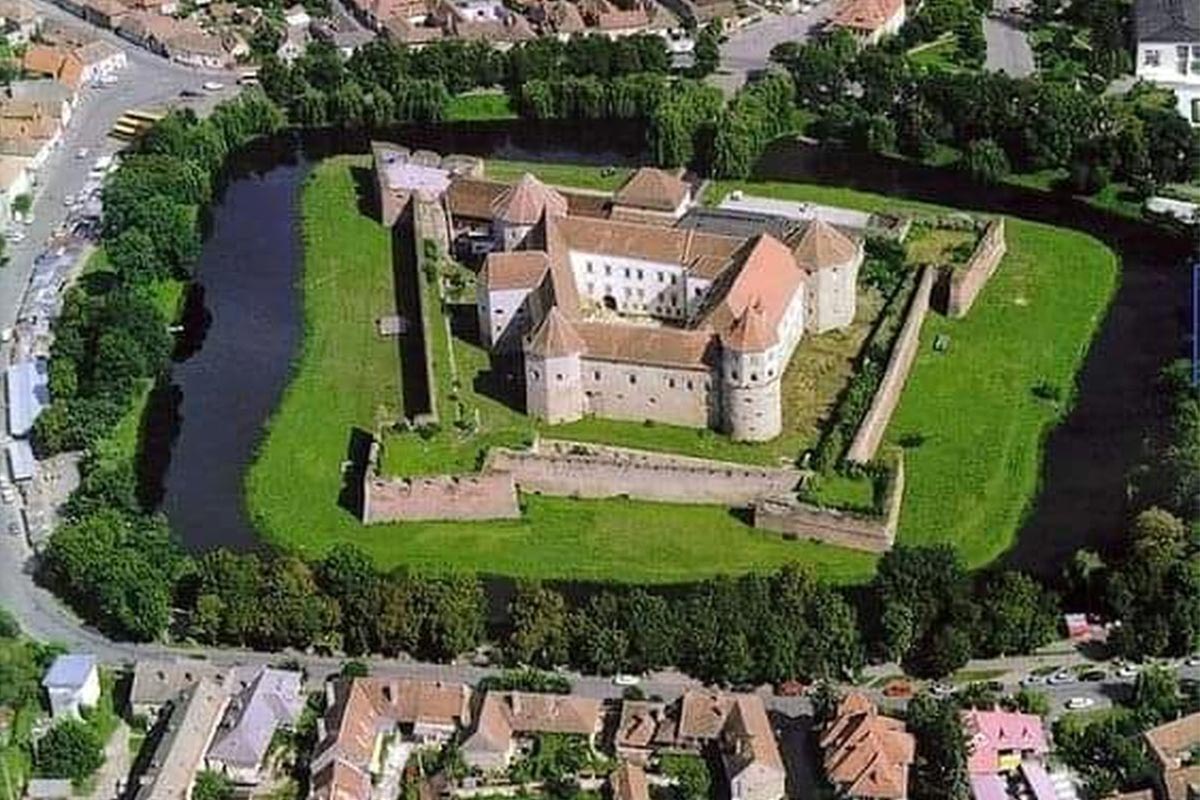Brief description: The Făgăraș Citadel is of particular beauty and represents the most important monument of Făgăraș, being at the same time one of the largest tourist attractions in Romania. A wonderful area with dreamy views, with fresh and soothing mountain air, can certainly be an extraordinary atmosphere to spend a few days of vacation. It is located right in the center of Făgăraș municipality, in Brașov county, thus being an opportunity to take a tour of this amazing area in Transylvania.
County: Brașov
Website: Cetatea Făgăraș
Images: Red Frog
More details – History Architecture Present
The construction of the Făgăraş fortress began in 1310, on the site of an old wooden fortification from the 12th century. It was built for strategic purposes, namely to defend the south-east of Transylvania from the invasions of the Tatars and the Ottomans. In 1526, Ștefan Mailat, who had become voivode of Transylvania and master of the fortress and the domains around Făgăraș, then transformed the building into a real fortress. The defense walls were doubled in thickness and new spaces were laid out in the rooms. However, in 1541, the fortress was attacked by the Ottomans, and Voivode Mailat was held prisoner for 10 years in the prison of the Seven Towers Fortress, in Constantinople, where he died. In 1599, Mihai Viteazul occupies the fortress and gives it to his wife, Doamna Stanca, together with the domain. Becoming prince of Translivania, a few years later, he shelters his family and royal treasury here. In 1617, the last two levels of the Red Tower were raised, it has a total of 5 levels. Făgărașul becomes a true capital of Transylvania during the 17th century, and the fortress is the residence of the princes of this area. In 1630, the defensive moat was widened, which surrounds the fortress and is connected by a secret channel to the Olt River, and a folding bridge was installed at the entrance. Some time later, the cellars were redeveloped, becoming dungeons for the confinement of revolting Serbs. The Făgăraș fortress was taken over by the Austrians in 1696, thus becoming a barracks, and starting in 1699, a military prison. In 1721, it became the seat of the Romanian Episcopate United with Rome, and between 1948 and 1960 it served as a prison for opponents of the communist system in Șara Făgărașului, who were political prisoners.
Architecture
Făgărașului Citadel is a walled citadel documented in the 15th century and has an irregular quadrilateral layout, with the eastern side longer and defended by a barbican-type outpost tower, at a distance of about 20 apples from city. The enclosure was in the form of a quadrangular crenellated wall, interrupted by four towers – three bastion-type and one round donjon-type. The building, in the first construction phase, was defined as a military defense fortification. From the 16th century, however, great changes took place in the architecture of the fortress, which transformed the defense fortress into a castle with a strong external fortification. The initiator of this work was voivode Ștefan Mailat, who separates the castle plan from the citadel plan, which surrounds the stone fortress with a defensive wall, which will also include the barbican tower, with slots for artillery, crenellated crown, but respecting the planimetry of the old walls defense. In the 17th century, the current shape of the fortress was established, through architectural transformations. Gabriel Bethlen, prince of Transylvania between 1613-1629, one of the most important builders of the fortress, drew up a plan in 1623 regarding the construction and modernization of the fortress in 36 points, including the construction of three bastions with casemates . He rearranges the interior rooms of the building and builds the loggias on the south side in Italian style, opens to the inner courtyard on the arches of six massive and imposing masonry piles. The windows of the inner courtyards have simple, but particularly elegant frames, and the entrances on the loggia have carved joinery in meplat or in relief with Renaissance motifs.
Present
Currently, the Făgăraş Citadel enjoys the visit of an increasing number of tourists, who pass by here to enjoy history, culture and pure emotion. From here, souvenir lovers can purchase various things to fondly remember this wonderful location and story.
We would like to thank Mr. Iercosan Marian for sending us these wonderful pictures from September 24, 2025.
Our UiR database: search results for „Făgăraş Fortress”









































